- Introduction
-
Hazardous chemicals are regulated to enhance the protection of human health and the environment during their handling, transport and use. The United Nations has developed mechanisms addressing the harmonization of classification and labelling criteria for these chemicals as well as transport provisions for all modes:
- to facilitate their identification and ensure their safe transport, handling and use, and
- to prevent, as far as possible, accidents to persons or property, or damage to the environment, the means of transport employed or to other goods.
These mechanisms are the “Globally Harmonized System of Classification and Labelling of Chemicals” (GHS) and the United Nations “Recommendations on the Transport of Dangerous Goods, Model Regulations”. They are developed by the ECOSOC “Committee of Experts on the Transport of Dangerous Goods and on the Globally Harmonized System of Classification and Labelling of Chemicals” to which UNECE provides secretariat services.
The recommendations of the Committee are applied worldwide.
- History
-
The Committee of Experts is a subsidiary body of the Economic and Social Council created in 1953 and reconfigured several times since then.
In 1953, the Economic and Social Council requested the Secretary-General to appoint a committee of experts on the international transport of dangerous goods to make a study on the matter and present a report: “Recommending and defining groupings or classification of dangerous goods on the basis of the character of risk involved; Listing the principal dangerous goods moving in commerce and assigning each to its proper grouping or classification; Recommending marks or labels for each grouping or classification, which shall identify the risk graphically and without regard to printed text; and Recommending the simplest possible requirements for shipping papers covering dangerous goods.”
The initial mandate given to the Committee was further enlarged by the Council over the years, to cover other aspects of the transport of dangerous goods e.g.: packing issues, mutually acceptable performance tests for packages, construction, testing and use of tanks, etc.
In 1959, the Committee, after having developed recommendations concerning the labelling of radioactive material, recognized the necessity of coordination with the International Atomic Energy Agency (IAEA) in the drafting of recommendations relating to the transport of such material. Consequently, the Council requested the Secretary-General to inform IAEA of its desire that IAEA be entrusted with the drafting of recommendations on the transport of radioactive material, on the understanding that those recommendations would be consistent with the principles adopted by the Committee and that they would be established in consultation with the United Nations and the specialized agencies concerned. This led to continuous cooperation among the Committee, the International Maritime Organization, the International Civil Aviation Organization and UNECE.
Two subsidiary bodies were created to assist the Committee on its work:
- A Group of Experts on Explosives (created in 1959) to deal with the listing and harmonizing of the packing of explosives.
- A Group of Rapporteurs on the packing of dangerous goods (created in 1963). This group was renamed “Group of Rapporteurs” in 1975.
In 1963 it was decided that the name of the “Committee of Experts for Further Work on the Transport of Dangerous Goods” be changed to “Committee of Experts on the Transport of Dangerous Goods”.
In 1989 the Group of Rapporteurs and the Group of Experts on Explosives were combined and renamed “Sub-Committee of Experts on the Transport of Dangerous Goods”.
In 1999 on the basis of a proposal transmitted by the President of the Intergovernmental Forum on Chemical Safety and of the related recommendations of the Committee, it was decided to reconfigure and extend the mandate of the Committee. Reconfiguring the Committee in accordance with those proposals was recognized as the most cost-effective and efficient option for the implementation of the globally harmonized system (GHS), while ensuring at the same time harmonization between various regulatory systems, facilitation of trade and cooperation between various authorities and organizations concerned with the sound management of chemicals.
As a result, in 2001, the “Committee of Experts on the Transport of Dangerous Goods” became the “Committee of Experts on the Transport of Dangerous Goods and on the Globally Harmonized System of Classification and Labelling of Chemicals”, with two subsidiary bodies:
- the “Sub-Committee of Experts on the Transport of Dangerous Goods” (TDG Sub-Committee) and
- the “Sub-Committee of Experts on the Globally Harmonized System of Classification and Labelling of Chemicals” (GHS Sub-Committee)
This structure has remained unchanged since then.
- Rules of procedure
-
In accordance with Rule 27 of the Rules of Procedure of the Economic and Social Council, Chapters VI and VIII to XII apply, mutatis mutandi, to the proceedings of the Committee and of its sub-committees.
- Terms of reference
-
The terms of reference of the Committee (as contained in the annex to resolution 1999/65) are as follows:
The Committee shall deal with strategic issues rather than technical issues. It is not envisaged that it will review, change or revisit technical recommendations of the sub-committees. Accordingly, its main functions shall be to:
- Approve the work programmes for the Subcommittees in the light of available resources;
- Coordinate strategic and policy directions in areas of shared interests and overlap;
- Give formal endorsement to the recommendations of the sub-committees and provide the mechanism for channeling them to the Economic and Social Council;
- Facilitate and coordinate the smooth running of the sub-committees.
The original terms of reference of the TDG Sub-Committee are contained in Council resolution 468 G (XV) of 15 April 1953. Since then, they were subsequently modified, confirmed or extended in the various resolutions adopted by the Council when considering the work of the Committee every two years.
The functions of the GHS Sub-Committee (as set forth in the annex to Council resolution 1999/65) are to:
- Act as custodian of the globally harmonized system of classification and labelling of chemicals, managing and giving direction to the harmonization process
- Keep the system up to date, as necessary, considering the need to introduce changes to ensure its continued relevance and practical utility, and determining the need for and timing of the updating of technical criteria, while working with existing bodies, as appropriate
- Promote understanding and use of the system and encourage feedback
- Make the system available for worldwide use and application
- Make guidance available on the application of the system, and on the interpretation and use of technical criteria to support consistency of application
- Prepare work programmes and submit recommendations to the Committee
- Composition and membership
-
The Committee and its subcommittees are ECOSOC subsidiary bodies composed by experts designated by Governments. Governments wishing to participate in the work of the Committee or its sub-committees are invited to designate and make available, at their own expenses, the members of their delegations.
The composition of the Committee and its two subcommittees was enlarged over the years following applications received by the Secretary-General from various countries.
All UN member states can participate in the sessions as full members (for those who applied for and were granted full membership) or as observers.
Intergovernmental organisations, UN specialized agencies and programs and Non-governmental organisations may also participate as observers, in accordance with ECOSOC rules of procedure.
All NGOs in consultative status with the Economic and Social Council (Categories I or II and Roster) may participate (as observers) in the deliberations of the Committee and of its Sub-Committees on questions within the scope of their activities, provided they express the wish to participate, or if the Committee wishes to consult them. NGOs which are not in consultative status with the Economic and Social Council, may participate if they are invited by the Sub-Committee or if they apply for consultative status with the Sub-Committee and their application is approved.
The following countries are full members of the Committee and one or both of its sub-committees.
Committee of Experts (40)
Argentina, Australia, Austria, Belgium, Brazil, Canada, China, Czech Republic, Denmark, Finland, France, Germany, Greece, India, Iran (Islamic Republic of), Ireland, Italy, Japan, Kenya, Mexico, Morocco, Netherlands, New Zealand, Nigeria, Norway, Poland, Portugal, Qatar, Republic of Korea, Russian Federation, Senegal, Serbia, South Africa, Spain, Sweden, Switzerland, Ukraine, United Kingdom of Great Britain and Northern Ireland, United States of America and Zambia.
TDG Sub-Committee (30)
Argentina, Australia, Austria, Belgium, Brazil, Canada, China, Czechia. Finland, France, Germany, India, Iran (Islamic Republic of), Italy, Japan, Kenya, Mexico, Morocco, Netherlands, Norway, Poland, Portugal, Republic of Korea, Russian Federation, South Africa, Spain, Sweden, Switzerland, United Kingdom of Great Britain and Northern Ireland and United States of America.
GHS Sub-Committee (36)
Argentina, Australia, Austria, Belgium, Brazil, Canada, China, Czechia, Denmark, Finland, France, Germany, Greece, Iran (Islamic Republic of), Ireland, Italy, Japan, Kenya, Netherlands, New Zealand, Nigeria, Norway, Poland, Portugal, Qatar, Republic of Korea, Russian Federation, Senegal, Serbia, South Africa, Spain, Sweden, Ukraine, United Kingdom of Great Britain and Northern Ireland, United States of America and Zambia.
- Frequency of meetings
-
The Committee and its two sub-committees work on a biennial basis (starting on odd years). The sub-committees meet back-to-back twice a year (usually in June-July and November-December each year) while the Committee meets once on even years, at the end the biennium of work. The meetings of the Committee and its two sub-committees are private, i.e.: participation in the sessions is restricted to countries, intergovernmental and non-governmental organisations entitled to participate in its work in accordance with the applicable rules of procedure.
The United Nations Economic Commission for Europe (UNECE) provides the secretariat services to the Committee and its subsidiary bodies since 1963.
All sessions are held at the United Nations Office at Geneva.
- Reports to ECOSOC (resolutions, implementation and programme of work)
-
The TDG and the GHS subcommittees report to the Committee.
At the end of each biennium, the Secretary-General submits to the Council a report on the work of the Committee of Experts and its two subcommittees. The report usually consists of 4 parts, containing:
- a draft resolution previously prepared by the Committee and which the Council is invited to adopt;
- detailed information on the implementation of the resolution adopted by the Council on the previous biennium;
- information about the work of the Committee and its two subcommittees during the biennium of work the programme of work; and
- the schedule of meetings for the following biennium.
At its 2023 session, the Council considered on 7 June 2023 the report of the Secretary-General on the work of the Committee during the biennium 2021-2022 and the implementation of ECOSOC resolution 2021/13. The Council adopted without changes the draft resolution “Work of the Committee of Experts on the Transport of Dangerous Goods and on the Globally Harmonized System of Classification and Labelling of Chemicals” contained therein. The resolution, circulated under the symbol E/RES/2023/5, is available in the six official languages of the United Nations
- Outcomes
-
The Committee of Experts and its two sub-committees are responsible for the United Nations instruments addressing global harmonization of hazard classification criteria and communication tools for hazardous chemicals as well as for the development of provisions for their safe transport by all modes.
- The TDG Sub-Committee is responsible for the “United Nations Recommendations on the Transport of Dangerous Goods. Model Regulations” also known as the “orange book”.
- The GHS Sub-Committee is responsible for the “Globally Harmonized System of Classification and Labelling of Chemicals (GHS)”, also known as the “purple book”.
The recommendations made by the Committee are applied worldwide and contribute to achieving sustainable development in its economic, social and environmental dimensions. With different regulations in every country and for different modes of transport, international trade in chemicals would be seriously impeded, if not made impossible and unsafe. Moreover, these chemicals are also subject to other kinds of regulations, e.g. work safety, consumer protection, storage and environment protection regulations.
The recommendations of the Committee relating to transport of dangerous goods are implemented at international, regional and national level through the legal instruments addressing transport of these substances by air, maritime and land transport.
For international transport, these are:
- The IMDG Code
- The ICAO Technical Instructions
- International agreements addressing transport of dangerous goods by road, rail and inland waterways:
Every two years, the international organisations addressing transport of dangerous goods by all modes update their legal instrument to give effect to the recommendations adopted by the Committee. This work is done in a coordinated manner to allow for simultaneous entry into force of the provisions for all modes.
For information about how this work is done for land modes refer to the entry “UNECE bodies”.
For detailed information about the status of implementation and specific guidance on the GHS refer to the information provided under the entry “GHS implementation and guidance”.
- Sustainable Development Goals
-

Seventeen Sustainable Development Goals (SDGs) were adopted by all UN member states in 2015, as part of the 2030 Agenda for Sustainable Development. The full list of SDGs, their history, related targets and indicators as well as information on their implementation progress is available at: https://sdgs.un.org/goals.
Some of these SDGs and their related targets, specifically address chemicals and waste management.
For 2023, the Economic and Social Council (ECOSOC) invites its subsidiary bodies to consider the theme “Accelerating the recovery from the coronavirus disease (COVID-19) and the full implementation of the 2030 Agenda for Sustainable Development at all levels”, and, without prejudice to the integrated, indivisible and interlinked nature of the SDGs, review in-depth goals 6 (on clean water and sanitation), 7 (on affordable and clean energy), 9 (on industry, innovation and infrastructure), 11 (on sustainable cities and communities) and 17 (on partnerships for the Goals).
Additional information on interlinkages between the work of ECOSOC subsidiary bodies (including the TDG and GHS sub-committees can be found at the ECOSOC website.
Summary of the SDGs identified by the TDG and GHS sub-committees as most relevant to their work
(For further details refer to informal documents INF.31/Rev.1 for the TDG Sub-Committee and INF.5 for the GHS Sub-Committee, that were considered at their fifty-ninth and forty-first sessions respectively).
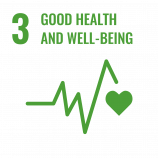
Ensure healthy lives and promote well-being for all at all ages
Main related target(s)
3.9 By 2030, substantially reduce the number of deaths and illnesses from hazardous chemicals and air, water and soil pollution and contamination.
Other related target(s)
3.4 By 2030, reduce by one third premature mortality from non-communicable diseases through prevention and treatment and promote mental health and well-being.
Why is this goal important?
According to WHO, about 2 million lives were lost in 2019 due to exposure to selected chemicals. This figure represents an increase of 20% compared to the data available in the 2016 report. Exposure to hazardous chemicals may occur through different routes (ingestion, inhalation, skin or eye contact or even through lactation) with acute or chronic effects. Global mortality can be reduced by avoiding or minimising exposure them.
How does the outcome of the work of the Committee and its sub-committees contribute to achieve this goal?
The GHS contains criteria to identify chemicals presenting physico-chemical, health and environmental hazards. The hazards addressed cover a wide range of properties found in chemicals widely handled and used worldwide, either at the workplace (as part of industrial processes or activities) or as components in household products of common use. One of the expected benefits of GHS implementation is to protect those who handle and use hazardous chemicals by identifying their intrinsic hazards and communicating them through labels and safety data sheets, as appropriate, to enable users and workers to take the appropriate measures to protect themselves from exposure.
Availability of information about chemicals’ hazards (through labels – for common users- and safety data sheets – at the workplace) plays a significant role in preventing unintentional poisonings and minimising exposure. For the transport sector, implementation of the provisions of the UN Model Regulations helps preventing accidents involving dangerous goods and minimising their consequences (by preventing death and injuries, and damage to property and the environment) when they occur.
Transport of dangerous goods regulations also played a fundamental role to ensure safe and seamless transport of supplies to fight the COVID-19 pandemic. These included for instance, transport of gases for medical care (e.g: medical oxygen), vaccines and medical wastes. COVID-19 vaccines needing temperature control were transported worldwide in accordance with the provisions of the UN Model Regulations and the modal instruments implementing them. In addition, the TDG Sub-Committee shared best practices on the national transport of clinical waste related to COVID-19 and on packing instructions for such waste.
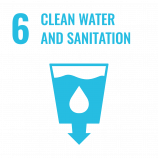
Ensure availability and sustainable management of water and sanitation for all
Main related target(s)
6.3 By 2030, improve water quality by reducing pollution, eliminating dumping and minimizing release of hazardous chemicals and materials, halving the proportion of untreated wastewater and substantially increasing recycling and safe reuse globally.
Why is this goal important?
One in three people do not have access to safe drinking water. Water supply for daily use for several millions of people is threatened by high levels of industrial pollution caused by uncontrolled dumping and release of hazardous chemicals into watercourses. 80 percent of wastewater goes into waterways without adequate treatment.
How does the work of the Committee and its sub-committees contribute to achieve this goal?
The GHS provides criteria to identify chemicals hazardous to the aquatic environment. Implementing the GHS allows policy makers to identify the chemicals at stake and take informed decisions about the measures to regulate them and control, eliminate or minimise their dumping and release into the environment.
The criteria in the GHS is used in the UN Model Regulations to identify environmentally hazardous chemicals (in particular those hazardous to the aquatic environment) and to define the applicable transport conditions (e.g. packing requirements) to avoid or minimise their release into the environment. These provisions are then implemented and further elaborated (when necessary) to match the specific needs of modal transport (e.g.: identification of marine pollutants).
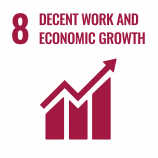
Promote sustained, inclusive and sustainable economic growth, full and productive employment and decent work for all
Main related target(s)
8.8 Protect labour rights and promote safe and secure working environments for all workers, including migrant workers, in particular women migrants, and those in precarious employment
Why is this goal important?
According to ILO estimates, at least one worker dies every 30 seconds due to occupational chemical exposure. Occupational chemical exposures may lead to acute poisoning by inhalation, ingestion or dermal contact. They can produce or induce a wide range of (reversible and irreversible) toxic effects in different parts (e.g: eye, skin) or body systems (e.g: reproductive, cardiovascular, respiratory and immune systems) and specific organs (e.g: liver, kidney, brain). Transport and industrial accidents caused by improper handling and/or storage of chemicals also take their toll in human lives. Giving workers appropriate information about the hazards of the chemicals they are exposed to at the workplace as well as of the precautionary measures to be taken to protect themselves is part of their “right-to-know”.
How does the work of the Committee and its sub-committees contribute to achieve this goal?
The provisions in the GHS and the Model Regulations cover all aspects to ensure proper identification and communication of hazards, including information on precautionary measures to be taken to handle and use hazardous chemicals.
In addition, the GHS and the UN Model Regulations provide a framework for chemicals’ safety regulations that may be implemented by emerging economies lacking the framework or resources to independently develop their own national safety programs. This work enhances both safety as well as economic growth by providing a platform critical to engaging in global trade and transport.
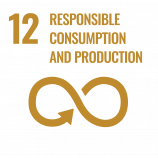
Ensure sustainable consumption and production patterns
Main related target(s)
12.4 By 2020, achieve the environmentally sound management of chemicals and all wastes throughout their life cycle, in accordance with agreed international frameworks, and significantly reduce their release to air, water and soil in order to minimize their adverse impacts on human health and the environment.
Other related target(s)
12.6 Encourage companies, especially large and transnational companies, to adopt sustainable practices and to integrate sustainability information into their reporting cycle
12.A Support developing countries to strengthen their scientific and technological capacity to move towards more sustainable patterns of consumption and production
Why is this goal important?
Effective control of the generation, storage, treatment, recycling and reuse, transport, recovery and disposal of hazardous wastes is of paramount importance for proper health, environmental protection and natural resource management, and sustainable development. Sustainable consumption and production will result in increased availability and use of services and products responding to basic needs and bringing a better quality of life while minimizing the use of natural resources, toxic materials, and emissions of waste and pollutants.
How does the work of the Committee and its sub-committees contribute to achieve this goal?
The GHS provides criteria to assess physico-chemical, health and environmental hazards in chemicals. This assessment can be used by policymakers to restrict or ban them partially or totally from industrial and or household chemicals. It can also encourage the chemical industry to look for safer alternatives (e.g., less hazardous ingredients) following the concept of “safe-by-design”, thus contributing to a more sustainable production pattern. For instance, in the past, the GHS revised its classification criteria to allow for adequate hazard characterisation and labelling of gases developed to replace substances with a high global warming potential.
GHS labels can also increase consumer’s awareness about the hazardous properties of the chemicals they use and help them identifying safer alternatives.
From a policy point of view, the GHS provides an internationally harmonized approach to chemicals’ hazard assessment that enables countries to get consistent and appropriate information on the chemicals they import or produce that can be used to establish appropriate infrastructures to control chemical exposures and protect people and the environment. This is particularly useful for countries with no or limited experience in chemicals management. Using the GHS as the foundation for the establishment of legislation addressing classification and labelling of chemicals gives them the opportunity to build on the knowledge and experience gained by developed countries in implementing the system and benefit from all the GHS compliant information already available. This can help increasing efficiency in consumption and production in these countries while at the same time helping them decoupling economic growth from environmental degradation.
The UN Model Regulations contains provisions for the safe transport of dangerous wastes for disposal or recycling. They also allow for packaging remanufactured, recycled and recovered packagings, thus reducing waste production. These provisions are updated regularly in the light of technical progress, the advent of new substances and materials and the exigences of modern transport systems. This is the case for instance of the provisions addressing the safe transport of electric storage systems such as lithium batteries (to keep pace with the increasing development and application of clean energy technologies) or provisions allowing the use of packagings made of recycled plastics materials for the transport of dangerous goods.

Take urgent action to combat climate change and its impacts
Why is this goal important?
Greenhouse gas emissions are more than 50 percent higher than in 1990. The annual average economic losses from climate-related disasters are in the hundreds of billions of dollars. This is not to mention the human impact of geo-physical disasters, which are 91 percent climate-related, and which between 1998 and 2017 killed 1.3 million people and left 4.4 billion injured.
How does the work of the Committee and its sub-committees contribute to achieve this goal?
Among other consequences, climate change can lead to increased release of hazardous chemicals into the environment, greater likelihood of higher incidences of pest and disease outbreaks and associated pesticide usage; events causing disruption of operations and infrastructure leading to hazardous chemicals releases (e.g. mobilization of hazardous chemicals from waste and wastewater facilities, mine sites, tailing dams). The hazardous properties of the chemicals involved need to be taken into account as part of the site-planning to help defining the measures to be taken to minimize risks associated with their accidental release following a climate-change related event.
The GHS contains provisions to identify chemicals hazardous to the ozone layer and upper atmosphere in accordance with the Montreal Protocol.
The TDG Sub-Committee develops provisions for the safe transport of electric storage systems such as sodium ion and lithium batteries and cells for electric vehicles, tools and equipment, thereby facilitating the use of low-carbon energies, strengthening resilience and adaptive capacity to climate change related hazards. These provisions cover also the transport of these articles for disposal or recycling.
The provisions in the Model Regulations also cover the safe transport of cleaner or alternative low-carbon fuels such as compressed natural gas for combustion engines or hydrogen for fuel cell engines.
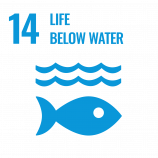
Conserve and sustainably use the oceans, seas and marine resources for sustainable development
Main related target(s)
14.1 By 2025, prevent and significantly reduce marine pollution of all kinds, in particular from land-based activities, including marine debris and nutrient pollution.
Why is this goal important?
Oceans absorb about 30 percent of the carbon dioxide produced by humans, and we are seeing a 26 percent rise in ocean acidification since the beginning of the industrial revolution. Marine pollution, an overwhelming majority of which comes from land-based sources, is reaching alarming levels. As much as 40 percent of the ocean is heavily affected by pollution, depleted fisheries, loss of coastal habitats and other human activities
How does the work of the Committee and its sub-committees contribute to achieve this goal?
Land-based activities involving hazardous chemicals may have a significant impact on watercourses and marine pollution when these chemicals are released into the environment. Some are deliberately dumped into the sea, others are found downstream from their sources These may include for instance, hazardous chemicals coming from industrial or mining sites, inorganic chemical pollution resulting from agricultural pesticides use, or toxic metals release.
The GHS provides criteria to identify chemicals hazardous for the aquatic environment and includes guidance for classification of complex and “difficult to test” substances such as petroleum distillate fractions, polymers, metals and metal compounds, etc.
Implementing the GHS allows policy makers to identify the chemicals at stake and take informed decisions about the measures to regulate them and control, eliminate or minimise their dumping and release into the environment.

